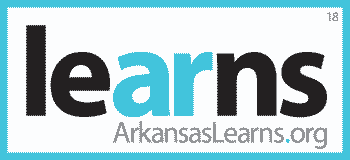In the debate over charter expansions, it has been said, by those who do or should know better, that “each side has their data.”
No, each side has its opinions. There is only one set of data.
The Little Rock School District’s own $1,000,000+ Fanning Howey Facilities Master Plan, approved by the then-President Greg Adams-led School Board, shows that as recently as May 27, 2014, the district knew it was at or over capacity in its secondary schools. And yet, the only facility capacity actions taken by the district since are to:
- Plan to open West Little Rock Middle School in a converted building, which will be at capacity the day it opens (2016);
- Plan to replace the most underutilized secondary school in the distinct (60% McClellan) with new Southwest Little Rock High School (Opening TBD); and
- Fight successful open-enrollment charters proposing to expand to meet documented demand.
In short, the Little Rock School District is:
- 102% of Capacity in High Schools
- 142% of Capacity in Non-Academic Distress High Schools
- 120% of Capacity in Middle Schools
- 130% of Capacity in Non-Academic Schools
- 109% of Capacity in All Secondary Schools
- 136% of Capacity in All Non-Academic Distress Secondary Schools
- 78% of Capacity in Elementary Schools
- 90% of Capacity in Total Schools
Most problematic, under Arkansas’s Opportunity School Choice law, approximately 4,251 LRSD students assigned to an Academic Distress middle or high school in 2016-17 have a right to transfer, with LRSD transportation funding up to $400 per student, to their non-Academic Distress school of choice. With all LRSD non-Academic Distress secondary schools at or above capacity, their only options are open-enrollment public charter schools or neighboring school districts. With zero capacity among the charters, that leaves only other school districts, but only if the district has capacity. It’s a public education and economic development disaster.
| LRSD High Schools | Enrollment | Capacity | Percentage |
| Central | 2,485 | 1,460 | 170% |
| Parkview | 1,086 | 1,050 | 103% |
| Fair* | 910 | 1,040 | 88% |
| Hall* | 1,158 | 1,434 | 81% |
| McClellan* | 819 | 1,366 | 60% |
| TOTAL HIGH SCHOOLS | 6,458 | 6,350 (-98) | 102% |
| TOTAL NON-ACADEMIC DISTRESS HIGH SCHOOLS | 3,571 | 2,510 (-1061) | 142% |
| LRSD Middle Schools | Enrollment | Capacity | Percentage |
| Forest Heights STEM (6-8) | 299 | 151 | 198% |
| Pulaski Heights | 807 | 539 | 150% |
| Dunbar | 688 | 541 | 127% |
| Mann | 815 | 672 | 121% |
| Mabelvale | 638 | 603 | 106% |
| Cloverdale* | 592 | 574 | 103% |
| Henderson* | 772 | 760 | 102% |
| TOTAL MIDDLE SCHOOLS | 4,611 | 3,840 (-771) | 120% |
| TOTAL NON-ACADEMIC DISTRESS MIDDLE SCHOOLS | 3,247 | 2,506 (-741) | 130% |
| TOTAL SECONDARY SCHOOLS | 11,069 | 10,190 (-879) | 109% |
| TOTAL NON-ACADEMIC DISTRESS SCHOOLS | 6,818 | 5,016 (-1,802) | 136% |
* Indicates Academic Distress School, meaning all assigned students have right, by law, to transfer to their non-Academic Distress school of choice, accompanied by district transportation funds.
| LRSD Elementary School | Enrollment | Capacity | Percentage |
| Dodd | 305 | 234 | 130% |
| Forest Heights STEM (K-5) | 339 | 302 | 112% |
| Williams | 438 | 416 | 105% |
| Brady | 407 | 400 | 102% |
| Forest Park | 400 | 393 | 102% |
| Otter Creek | 543 | 540 | 101% |
| Booker | 459 | 480 | 96% |
| Pulaski Heights | 320 | 333 | 96% |
| Bale | 336 | 364 | 92% |
| Wakefield | 550 | 600 | 91% |
| Watson | 415 | 455 | 91% |
| Wilson | 307 | 340 | 90% |
| Mabelvale | 527 | 590 | 89% |
| Western Hills | 238 | 277 | 86% |
| Meadowcliff | 330 | 415 | 80% |
| Roberts | 892 | 1,111 | 80% |
| Terry | 407 | 513 | 79% |
| Fulbright | 558 | 718 | 78% |
| Jefferson | 343 | 450 | 76% |
| King | 406 | 552 | 74% |
| Baseline | 302 | 413 | 73% |
| Gibbs | 282 | 396 | 71% |
| McDermott | 341 | 504 | 68% |
| Franklin | 294 | 443 | 66% |
| Romine | 276 | 430 | 64% |
| Stephens | 329 | 529 | 62% |
| Carver | 274 | 474 | 58% |
| Rockefeller | 260 | 481 | 54% |
| Chicot | 558 | 1,053 | 53% |
| Geyer Springs | 167 | 358 | 47% |
| Washington | 420 | 964 | 44% |
| TOTAL ELEMENTARY SCHOOLS | 12,095 | 15,528 (+3,433) | 78% |
| TOTAL LRSD SCHOOLS | 23,164 | 25,718 (+2,554) | 90% |
“Hitting the Pause Button” on charters may read, sound like a sensible political talking point, but it denies immediate adequate and equitable public education to real students and families.
Rather than wasting precious time and resources blaming and fighting external forces, the Little Rock School District must move post haste to meet the very present needs of its existing and prospective students.
If every open-enrollment charter in the LRSD footprint closed today, there would be no room to enroll even one of those students in non-Academic Distress district secondary schools. Supporting all public school expansion, district and charter, is an individual, familial and community economic development imperative.
